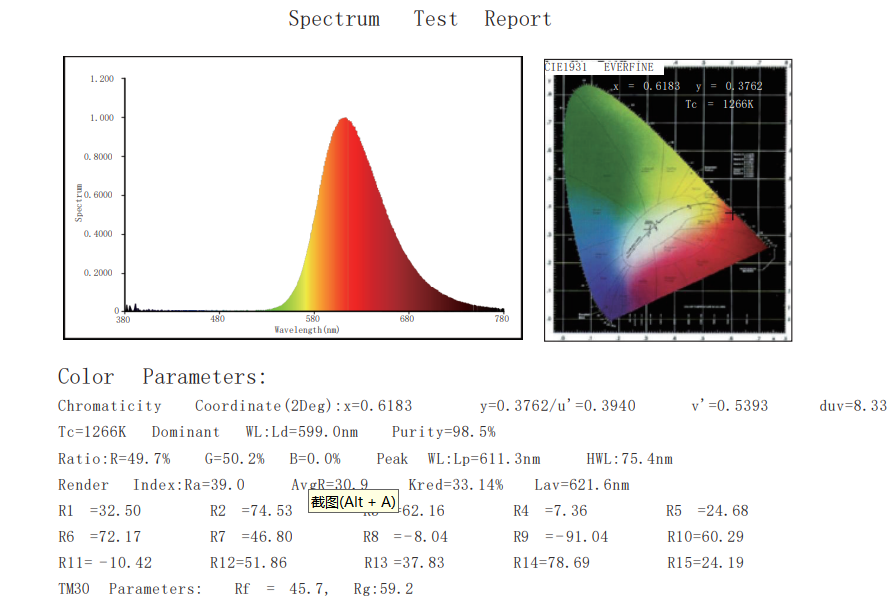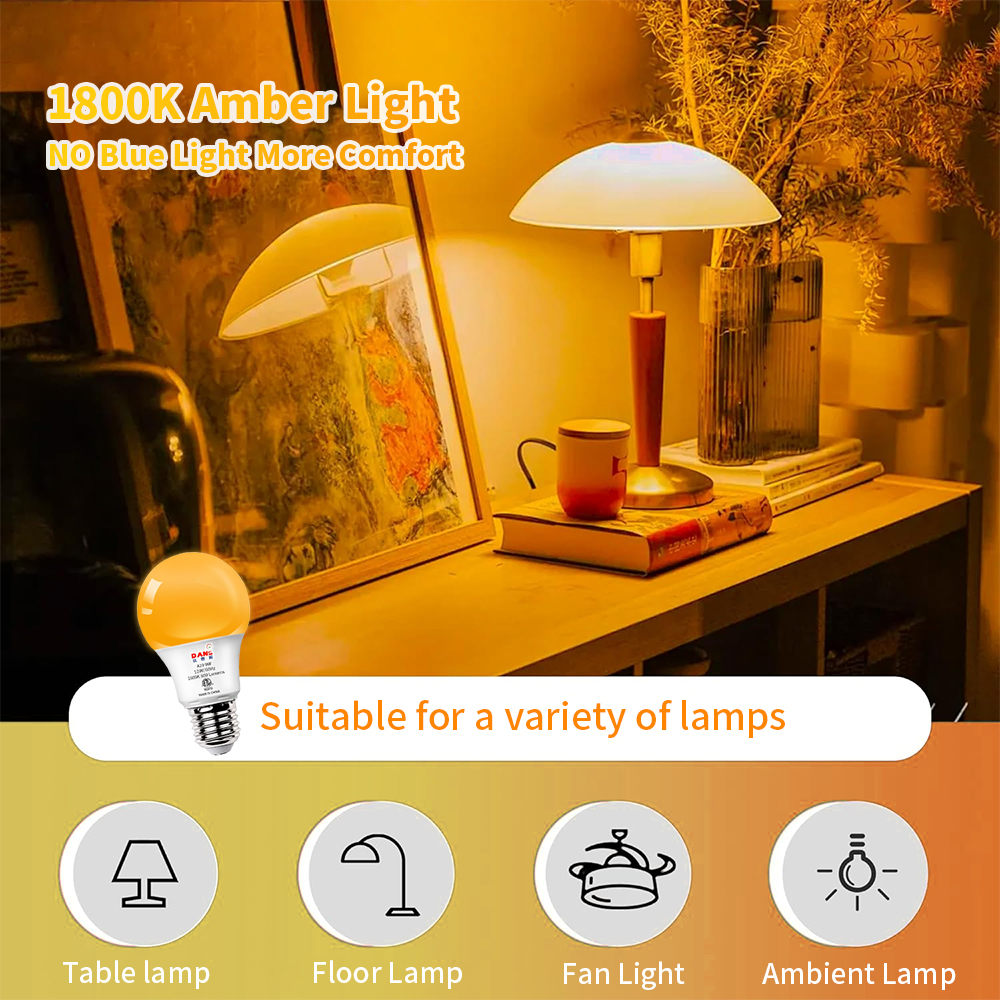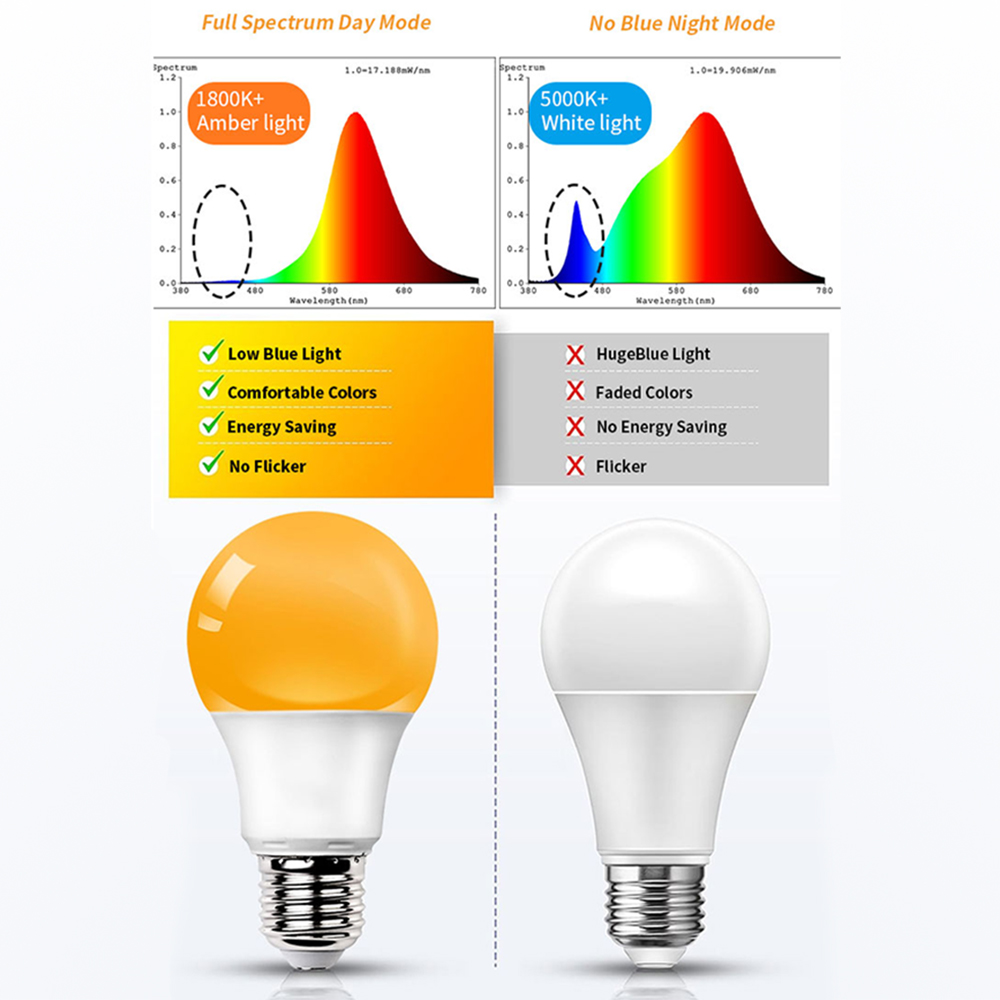If you’ve ever heard people talk about “blue light” and wondered what it means, you’re not alone. You might have heard it’s something to avoid because it can be bad for your eyes or even keep you from sleeping well. But when it comes to LED bulbs, is blue light something to worry about? And can LED bulbs be made without blue light? Let’s dive into these questions and find out what blue light really is, how it affects us, and whether it’s possible to find LED bulbs without it.
What is Blue Light?
Blue light is a type of light that comes from the sun, screens, and even some light bulbs. It has a shorter wavelength than other colors of light, which is why it appears blue. You get blue light every time you look at your phone, computer, or TV screen, because those devices use it to display images. But blue light doesn’t just come from screens—it’s also in natural sunlight, as well as many artificial lights, including LED bulbs.
Even though blue light is everywhere, it’s not all bad. In fact, during the daytime, blue light can help us feel awake and alert. It helps our brain stay active, which is why we feel more energetic when we are outside in the sunlight. But when we’re exposed to too much blue light, especially at night, it can cause some problems.

How Does Blue Light Affect Us?
Blue light has a strong effect on our eyes and our sleep. Here’s why:
- Impact on Eyes:
- Our eyes are sensitive to all types of light, but blue light is particularly harsh. Prolonged exposure to blue light, especially from screens, can lead to something called “digital eye strain.” This is when your eyes feel tired, dry, or irritated after staring at a screen for a long time.
- While there is no direct evidence that blue light from screens causes permanent damage to the eyes, it can still make them feel uncomfortable and strained.
- Sleep Problems:
- Blue light has an even bigger impact on our sleep. Our brains are naturally programmed to sleep when it’s dark and wake up when it’s light. This is because of a hormone called melatonin, which helps us feel sleepy. But blue light from screens and lights can trick our brains into thinking it’s still daytime, which can stop the production of melatonin. This makes it harder to fall asleep at night.
- Studies have shown that if we use screens or are exposed to bright lights late at night, it can make it more difficult to fall asleep and stay asleep.

What Are LED Bulbs?
LED stands for “light-emitting diode,” which is a special type of light bulb that uses a small chip to produce light. Unlike traditional bulbs, like incandescent or fluorescent bulbs, LED lights are more energy-efficient, last longer, and produce less heat. They’ve become really popular because they save energy and are more environmentally friendly.
LED bulbs are often used in homes, offices, streetlights, and even in screens like TVs and phones. They can come in different colors, from warm yellow to cool white, and even blue. The amount of blue light in an LED bulb depends on the type of bulb and the color temperature it produces.
Can LED Bulbs Have No Blue Light?
Now, let’s get to the main question: Can LED bulbs have no blue light? The answer is a little tricky because all light sources, including LED bulbs, emit some amount of blue light. However, the amount can vary depending on the type of LED bulb you choose.
- Warm White vs. Cool White LEDs:
- LED bulbs come in different color temperatures, usually labeled as “warm white” or “cool white.” Warm white LEDs are softer and have more of a yellowish light, similar to the glow of traditional incandescent bulbs. These bulbs tend to emit less blue light compared to cool white LEDs.
- Cool white LEDs, on the other hand, produce a much brighter, bluish light, which means they emit more blue light. If you’re concerned about blue light, you might want to stick with warm white LEDs.
- Specially Designed LED Bulbs:
- Some companies have created LED bulbs that are designed to reduce the amount of blue light. These bulbs are often marketed as “blue light filtering” or “sleep-friendly.” They work by changing the light spectrum so that the bulb emits less blue light, especially in the evening. These can be a good option for people who want to avoid the potential effects of blue light on their sleep.
- LED Bulbs with Adjustable Color Temperatures:
- Some modern LED bulbs let you adjust the color temperature, meaning you can control how much blue light is emitted. By lowering the color temperature on these bulbs, you can get a warmer, softer light that’s easier on your eyes and less likely to affect your sleep.
Why Would You Want an LED Bulb with No Blue Light?
Now that we know that LED bulbs can have blue light, you might be wondering why you’d want to avoid it in the first place. Here are some reasons why you might prefer an LED bulb with less blue light:
- Better Sleep:
- Since blue light can interfere with melatonin production and make it harder to fall asleep, choosing LED bulbs with less blue light, especially in the evening, can help you sleep better. This is especially true if you’re using lights in your bedroom or living room before bed.
- Less Eye Strain:
- Blue light is harsher on your eyes than other types of light, so using LED bulbs with less blue light can help reduce digital eye strain. This is especially important if you spend a lot of time looking at screens or reading under artificial lights.
- Healthier Lighting:
- Some research suggests that long-term exposure to high levels of blue light, especially at night, could potentially have negative effects on our health, including the risk of developing certain eye conditions. Reducing exposure to blue light can help lower this risk.
How Can You Choose the Right LED Bulb for Your Needs?
If you’re concerned about blue light and want to find the right LED bulb for your home, here are a few tips to keep in mind:
- Go for Warm White LEDs:
- If you want a light that’s gentle on your eyes and won’t disrupt your sleep, choose warm white LED bulbs. These bulbs emit less blue light and are great for areas like your bedroom or living room.
- Look for Blue Light Filtering Bulbs:
- There are many LED bulbs available that specifically reduce blue light. These are designed to be sleep-friendly and can help you avoid the negative effects of blue light exposure at night.
- Use Dimmable LEDs:
- Dimmable LED bulbs give you more control over the amount of light they emit. Lowering the brightness in the evening can reduce the amount of blue light in your environment and help you wind down for bed.
- Consider Smart Bulbs:
- Many smart LED bulbs let you change the color temperature. This means you can switch to a warmer, less blue light in the evening and brighter, cooler light during the day when you need to stay alert.

Conclusion
In short, all LED bulbs emit some amount of blue light, but the level can vary depending on the bulb. If you’re worried about blue light, especially when it comes to sleeping or reducing eye strain, you can choose LED bulbs that emit less blue light. Warm white LED bulbs, blue light filtering bulbs, and smart bulbs with adjustable settings are great options to consider.
Choosing the right LED bulb for your home can help you create a comfortable, healthy environment without worrying too much about blue light. By being mindful of the lighting in your space, you can reduce the effects of blue light and enjoy better sleep, less eye strain, and a more relaxed atmosphere.
